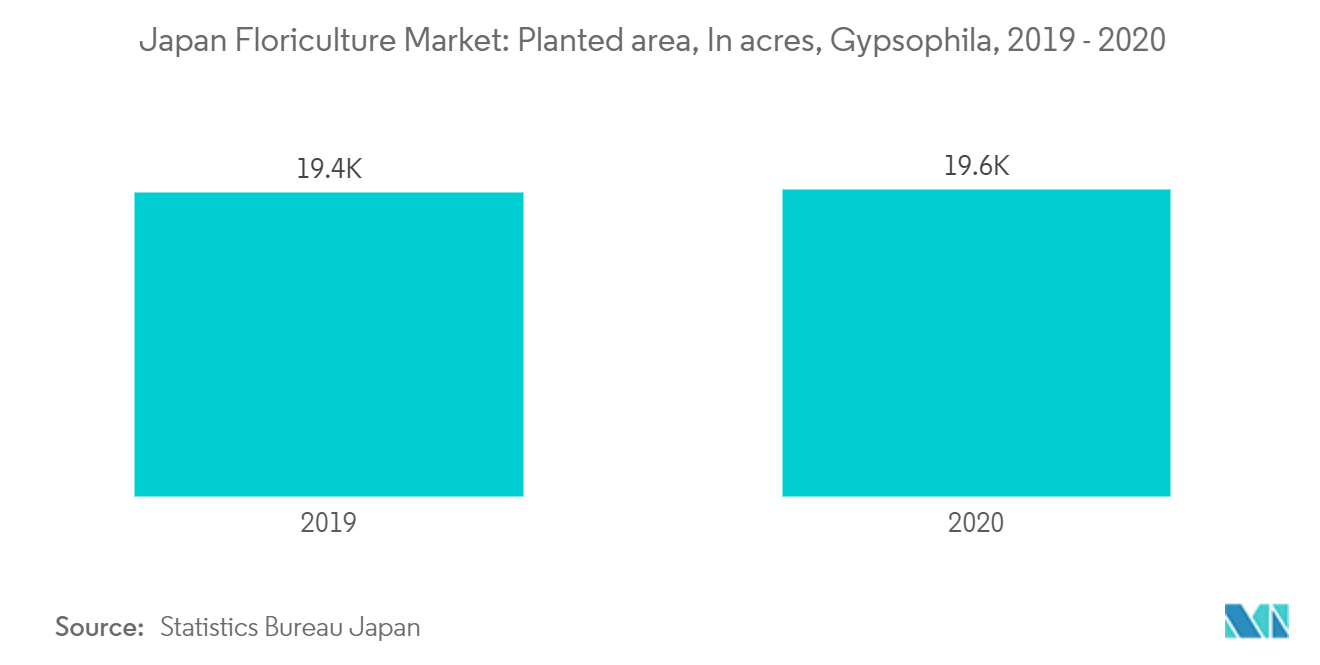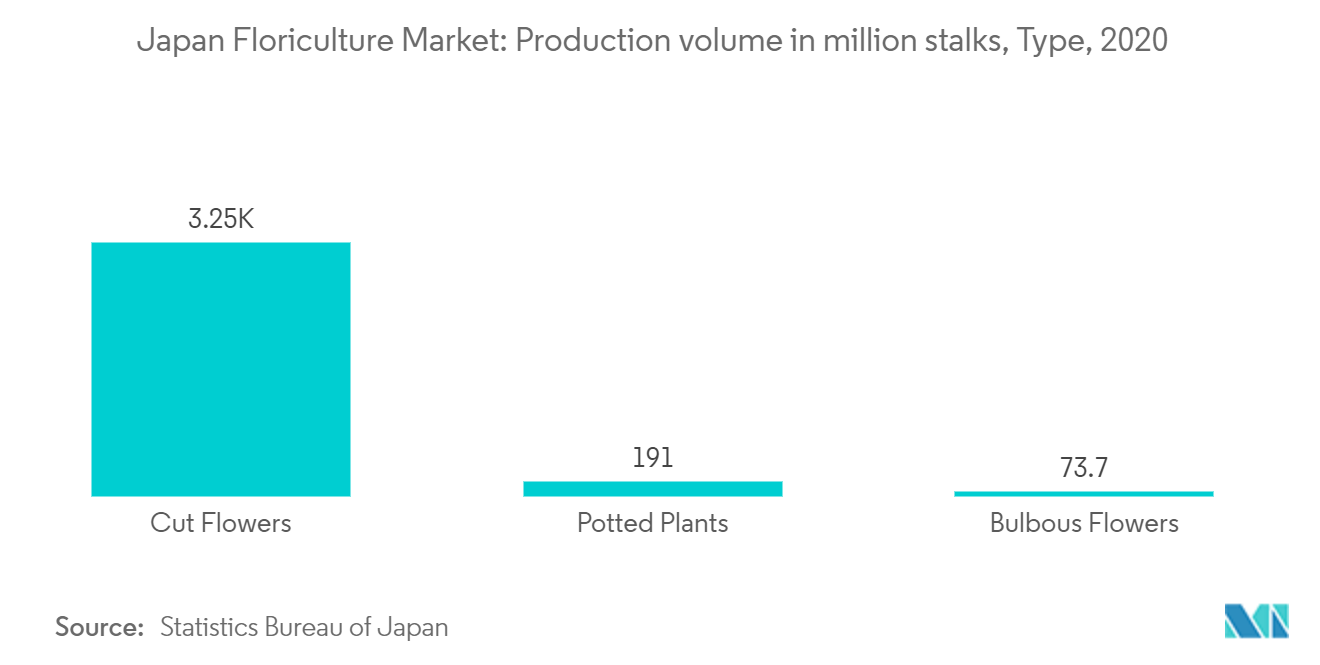Market Trends of Japan Floriculture Industry
This section covers the major market trends shaping the Japan Floriculture Market according to our research experts:
Young Farmers are Taking Up Flower Farming
- Japan is one of the world's leading flower producers. The flowers are grown by as many as 60,000 families throughout the county. The number of domestic and commercial farms run by elderly households is declining in Japan, and the number of young farmers taking up flower farming is increasing. The percentage of people below 45 years of age is involved in producing flowers, and the number is almost double that of people engaged in rice farming.
- Along with this, the industry has vast potential, generating profitable employment for young people in the country. So, the profits incurred by flower farming are pushing the younger generation towards market growth. Additionally, the increasing interest of young people in flower farming, as it is considered the best recreational activity, is also driving them to cultivate different varieties of flowers that earn good amounts from exports.
- As the median age in Japan is around 46 years, the trend depicts that young people are actively involved in the floriculture market, which will play a significant role in developing the domestic market.
- Furthermore, most plant and flower varieties are bred by private companies and young growers. This situation will improve the productivity of crops, leading to the growth of the market in Japan. Energy-saving flower production technologies are used, where the heat and lighting for flowers are utilized after sundown, thereby reducing energy consumption by 30.0%. The usage of these technologies by young growers is expanding the area under major flowers and also contributing to enhanced productivity.
- For instance, according to the Statistics Bureau of Japan, the planted area under Gypsophila was 19,400 in 2019, which increased to 19,600 in 2020. Therefore, the familiarity with production technologies for young farmers also contributed to the market's growth.

Cut Flowers Dominate the Market
- Cut flowers account for the largest share of the total cultivated area in Japan and they account for the major cultivated areas, followed by potted flowers and bulbous plants. The production remains robust, as the export values for flowers and plants are strong, owing to the quality of Japanese floriculture products. For instance, according to the Statistics Bureau of Japan, in 2020, cut flower production accounted for 3,252 million stalks, followed by potted and bulbous flowers with 191 million stalks and 73.7 million stalks, respectively.
- Aichi, Okinawa, and Shizuoka were the top three prefectures in Japan, with the largest area under flower and plant cultivation. In terms of output and sales, Aichi, Chiba, and Fukuoka prefectures accounted for the majority of sales, accounting for around 31.0% of the total agricultural output from flowers and plants.
- Chrysanthemum is the most popular cut flower in Japan compared to other cut flowers. As per the Statistics Bureau, Japan's chrysanthemum shipment volume in 2020 was 1.3 billion stalks, followed by carnation and rose. The lack of adequate supply in the market increased the reliance on imports to meet the demands of consumers. There is an increased demand for fresh-cut flowers in Japan. This gave rise to the exports of cut flowers from neighboring countries.
- According to ITC Trade, the country imported cut flowers worth USD 341.6 million in 2020, which had increased to USD 343.8 million in 2021, with Colombia, Malaysia, Vietnam, and China being prominent suppliers. Thus the increased demand and imports of cut flowers made it the prominent segment contributing to the market's growth.


